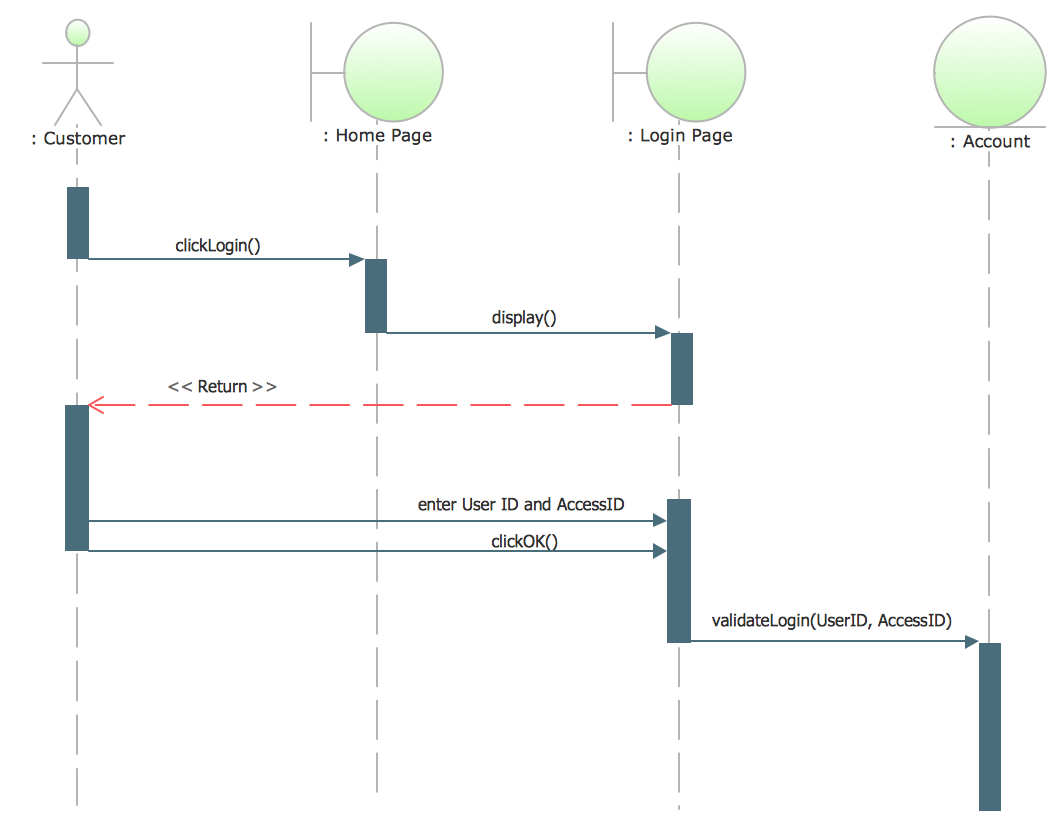

The UML sequence diagram example "Checking process" was created using the ConceptDraw PRO diagramming and vector drawing software extended with the Rapid UML solution from the Software Development area of ConceptDraw Solution Park. Schedules that do not set forth specific times for events to occur may instead list an expected order in which events either can or must take place." They are often made using a calendar, where the person making the schedule can note the dates and times at which various events are planned to occur. Schedules are useful for both short periods, such as a daily or weekly schedule, and for long term planning with respect to periods of several months or years. There are a wide variety of situations in which schedules are necessary, or at least useful. Making and following schedules is a fundamental human activity, and learning to do these things effectively is one of the most basic life skills.
#SEQUENCE DIAGRAM TOOL HOW TO#
The process of creating a schedule - deciding how to order these tasks and how to commit resources between the variety of possible tasks - is called scheduling, and a person responsible for making a particular schedule may be called a scheduler. "A schedule or timetable is a basic time management tool consisting of a list of times at which possible tasks, events, or actions are intended to take place, or a sequence of events in the chronological order in which such things are intended to take place. The SysML shapes example "Design elements - Sequence diagram" is included in the SysML solution from the Software Development area of ConceptDraw Solution Park. It should be the result of a message, either from the object itself, or another. When an object is destroyed (removed from memory), an X is drawn on top of the lifeline, and the dashed line ceases to be drawn below it (this is not the case in the first example though). Activation boxes, or method-call boxes, are opaque rectangles drawn on top of lifelines to represent that processes are being performed in response to the message (ExecutionSpecifications in UML). Asynchronous calls are present in multithreaded applications and in message-oriented middleware. If a caller sends an asynchronous message, it can continue processing and doesn’t have to wait for a response. If a caller sends a synchronous message, it must wait until the message is done, such as invoking a subroutine. Solid arrow heads represent synchronous calls, open arrow heads represent asynchronous messages, and dashed lines represent reply messages. Messages, written with horizontal arrows with the message name written above them, display interaction. Use it to design your sequence diagrams using ConceptDraw PRO diagramming and vector drawing software. The vector stencils library "Sequence diagram" contains 32 SysML symbols. This example of UML sequence diagram symbols for the ConceptDraw PRO diagramming and vector drawing software is included in the ATM UML Diagrams solution from the Software Development area of ConceptDraw Solution Park. Ī message sent from outside the diagram can be represented by a message originating from a filled-in circle (found message in UML) or from a border of the sequence diagram (gate in UML)." When an object is destroyed (removed from memory), an X is drawn on top of the lifeline, and the dashed line ceases to be drawn below it.

Objects calling methods on themselves use messages and add new activation boxes on top of any others to indicate a further level of processing. Solid arrow heads represent synchronous calls, open arrow heads represent asynchronous messages, and dashed lines represent reply messages.Īctivation boxes, or method-call boxes, are opaque rectangles drawn on top of lifelines to represent that processes are being performed in response to the message (ExecutionSpecifications in UML). Leaving the instance name blank can represent anonymous and unnamed instances. If the lifeline is that of an object, it demonstrates a role. This allows the specification of simple runtime scenarios in a graphical manner. "A sequence diagram shows, as parallel vertical lines (lifelines), different processes or objects that live simultaneously, and, as horizontal arrows, the messages exchanged between them, in the order in which they occur. Use it for object-oriented modeling of your bank information system. The vector stencils library "Bank UML sequence diagram" contains 34 shapes for drawing UML sequence diagrams.


 0 kommentar(er)
0 kommentar(er)
